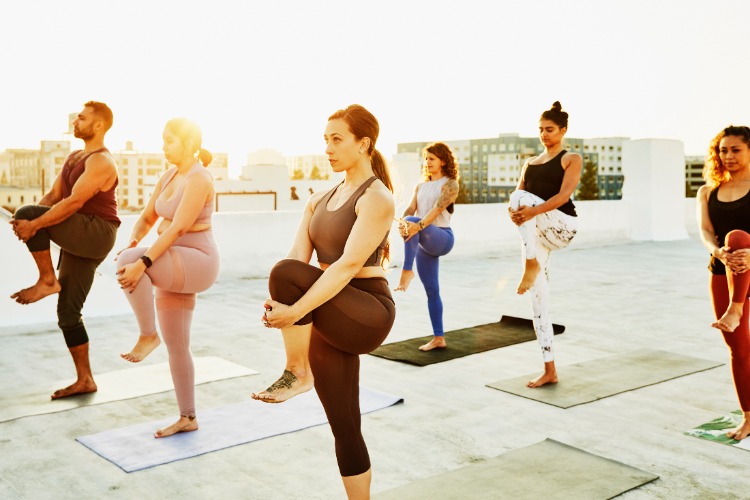How to shift your thinking about exercise
Published by HealthFitness on February 26th, 2025
You’ve probably heard why you should exercise: it reduces the risk of heart disease, helps your bones, reduces risk of dying from cancer, helps you lose weight or maintain lost weight, etc. While all of this is good, these facts alone probably won’t prompt you to jump on the exercise bike or go for a walk.

On the other hand, what if moving your body meant…
- You’re spending time with friends?
- You’re engaging in a sport or hobby that stimulates your mind and/or competitive spirit?
- You’re helping someone in need?
- You’re getting errands done at the same time?
- You’re enjoying nature or the outdoors?
- You notice and feel your body getting stronger and/or faster?
- You notice you sleep better at night?
- You have more energy and/or endurance?
- You’re more calm and able to handle stress?
- You’re achieving goals and showing yourself what you can do?
- You’re having fun?
Exercise has the potential to do all of the above and more! It’s really how you choose to focus. If any of the examples inspired you, write them down on a sticky note and put them in a visible place for you to see every day. Did you notice how the examples support overall wellbeing?
In addition to the immediate and shorter-term physical benefits, being active can support social wellbeing by connecting you with others. You might benefit someone else if your activities involve a 5k or 10k charity run. You might save money by walking to places where you used to drive. You could be enjoying your environment by getting outside. Rather than thinking of physical activity as something you should do, focus on what being active can do for you!
Two Kinds of Movement
As you become more active, think about two types of movement:
1. Moving your body throughout the day—park further away from stores when you do errands; make an extra trip to bring in groceries rather than carrying it all in at once; break up TV, reading, or online sessions every 30 to 60 minutes with a few minutes of standing, stretching and moving. Just look for ways to build movement into your regular routine.
2. Carving out time for regular, planned activities. For example, schedule a brisk walk for 30 minutes five days a week. If that feels like too much, try starting with just 10-15 minutes, or by breaking it up, such as taking three 10-minute walks each day. Look for ways to fit in some strength training and stretching, too. Not sure where to start?
A fitness expert or personal trainer can be a great person to help. What activities you use to get your body moving are up to you! Always remember to warm up first by doing a lower-intensity movement (such as a walk at a slower pace) for five to 10 minutes. Remember to cool down with five to 10 minutes of a lower-intensity movement after you’ve been active as well. This is important for preventing injuries.
How will you shift your mindset and get your body moving so you can reap all of its benefits for your well-being?
Safety First: Physical activity is safe for almost everyone. However, if you haven’t been active in a while, start slowly and gradually build up. Don’t do vigorous exercise at first. Check with your doctor before starting or increasing exercise if you have diabetes or any disease of the heart or lungs, high blood pressure, any history of chest pain, breathing problems or shortness of breath, dizziness, swelling in your ankles, bone or joint problems or unusual tiredness. Pregnant women should also talk with a doctor before increasing physical activity.
Sources: Centers for Disease Control and Prevention, American College of Sports Medicine